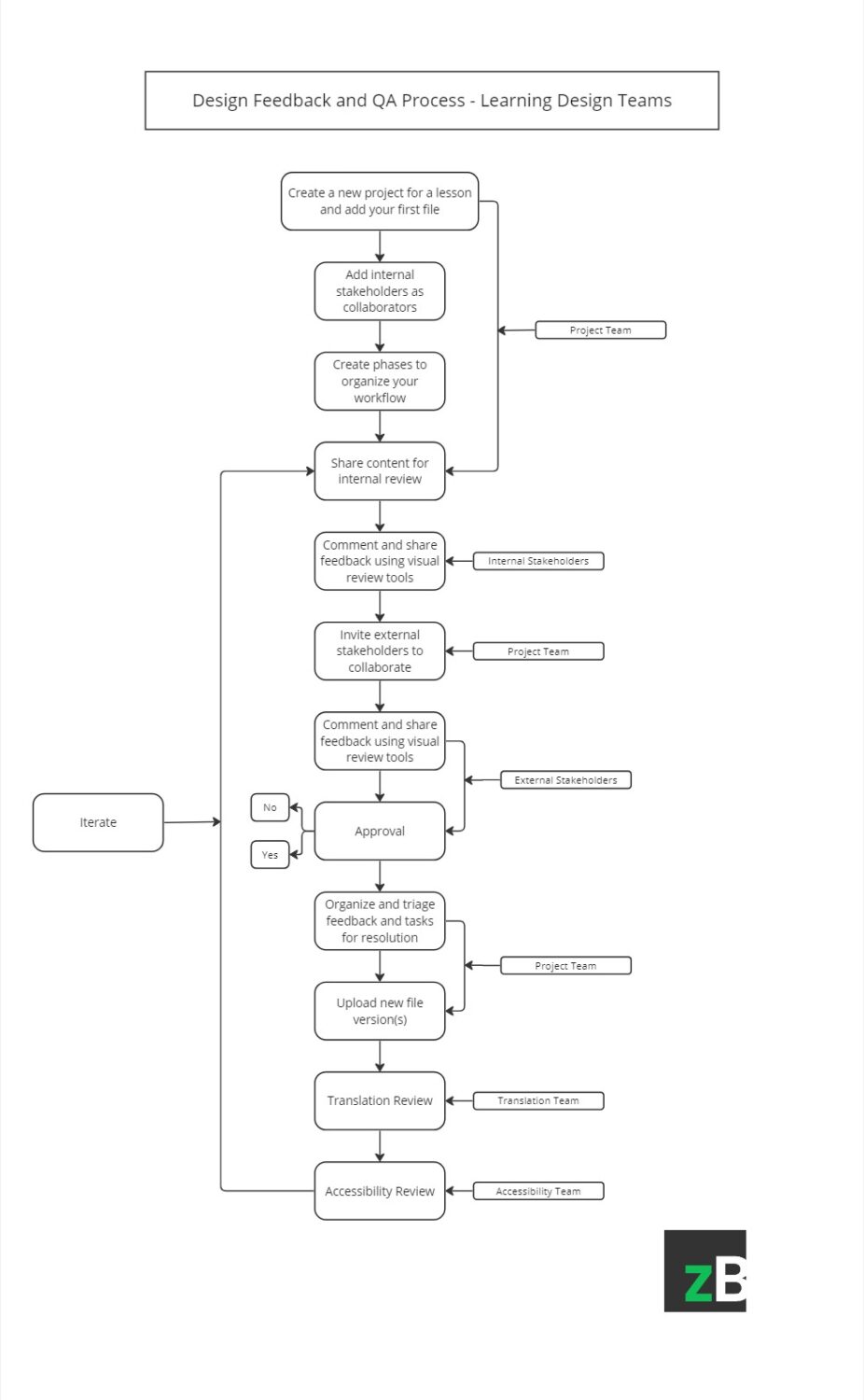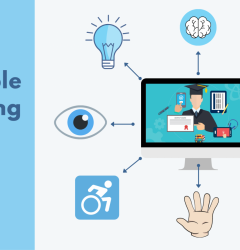Working with SMEs and Clients: A Comprehensive Guide to Effective Collaboration for L&D Teams
22 Jan
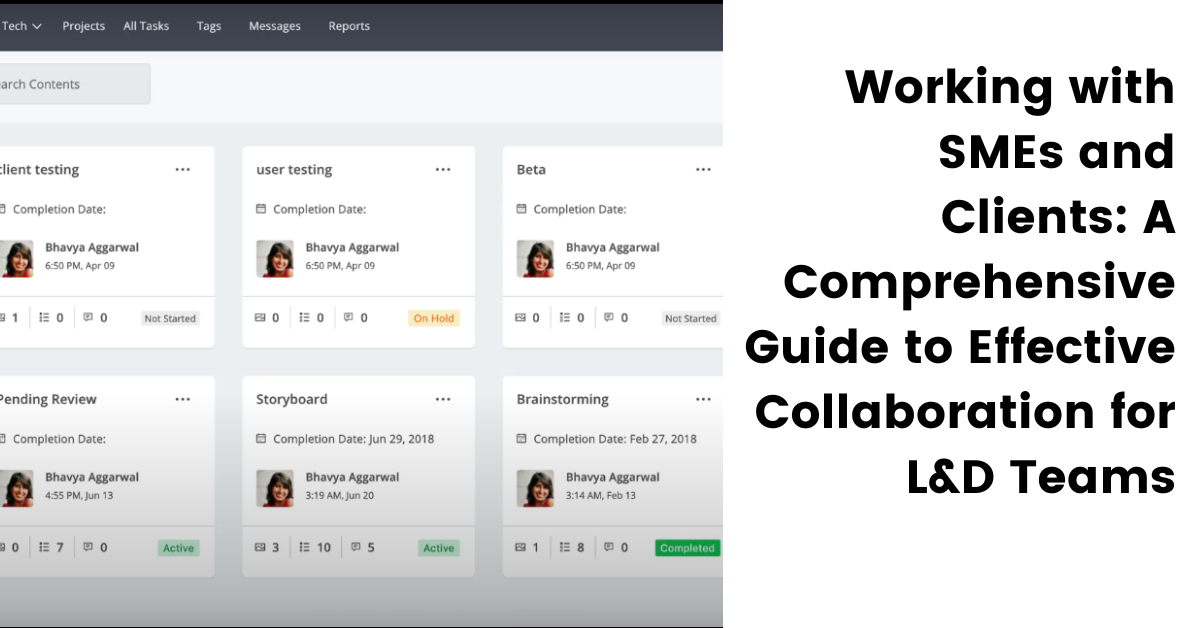
Table of Contents
ToggleWorking with SMEs and clients allows L&D teams to create quality custom content that is not only informative but also practical, applicable and meets the learners’ needs.
SMEs bring in-depth knowledge and real-world experience to the table, enriching the learning material with their expertise. Clients, on the other hand, provide valuable insights into the learner’s needs and expectations, ensuring that the content is relevant and impactful.
The expertise and insights from both stakeholders also ensure that the content is accurate, relevant, and aligned with industry standards.
While the benefits of collaborating with SMEs are outstanding, it’s not without its challenges. These can range from knowledge gaps and conflicting opinions to communication barriers, time constraints, and collaboration tools – which we’ll discuss shortly.
In this article, you’ll learn about…
- Common challenges L&D Teams face when it comes to working with SMEs and clients
- How to proactively avoid those challenges and/or address them
- Best practices to streamline your collaboration process and deliver courses 50% faster
- Recommended tools to ensure effective and seamless collaboration with SMEs and clients
Common Challenges L&D Teams Face when Collaborating with SMEs and Clients
Knowledge Gaps Between SME Expertise, Client Insights, and Instructional Design
One of the main challenges in collaborating with SMEs and clients is the knowledge gap between the SME’s expertise and the instructional design, as well as client insights.
SMEs are experts in their field, but they may not be familiar with the principles of instructional design or understand how to translate their knowledge into an effective learning experience. On the other hand, clients may have a clear understanding of the learner’s needs but may not be familiar with the technical aspects of course development.
For example, an SME might be an expert in software development but may not know how to structure this knowledge into a course that facilitates learning. Similarly, a client might know that their employees need training on a specific tool, but they might not know how to create engaging and effective training material.
Owing to these differences and diverse perspectives, it becomes difficult for L&D teams to bridge these gaps and ensure an effective collaboration.
Conflicting Opinions and Expectations
Another challenge is managing conflicting opinions and expectations. It’s important to establish a common understanding and align the expectations at the beginning of the project.
For instance, an SME might want to include a lot of technical details in the course, while the L&D team might want to keep it high-level and easy to understand. Similarly, a client might have specific ideas about what the course should look like, which might not align with the L&D team’s instructional design principles.
Collaboration and Communication Barriers
Barriers such as different communication styles, time zones, and availability can pose challenges. For example, if the L&D team is based in the U.S. and the SME is in Japan, the time difference can make synchronous communication difficult.
Also, if the SME prefers email communication while the L&D team uses a project management tool, this can lead to missed messages and miscommunication.
Time Constraints and Commitment
SMEs and clients often have their primary job responsibilities, and collaborating on an eLearning course development project is an additional task for them. Hence, balancing their availability with the project timelines can be a challenge.
For instance, an SME might only be available for a few hours a week, which could slow down the course development process.
Technical Challenges with Collaboration Tools
Not everyone is tech-savvy, and some SMEs or clients might find it difficult to use collaboration tools for feedback and quality assurance. They might struggle with features like tracking changes, adding comments, or even navigating the platform. This can slow down the review process and lead to frustration.
Inconsistent Feedback
During the review process, you may receive inconsistent feedback from different SMEs or clients. One person might suggest a change that another person disagrees with.
Another factor that contributes to inconsistent feedback is not having all feedback in one place. This eventually leads to a lack of clarity and inconsistencies in the long run.
Scope Creep
Scope creep refers to changes, continuous or uncontrolled growth in a project’s scope, at any point after the project begins. This can occur when new topics or ideas are introduced mid-development, causing the project to expand beyond its original scope.
This expansion may lead to delays in project timelines, cost overruns, and compromised quality, among others.
Cultural and Language Barriers
If you’re working with SMEs or clients from different cultural backgrounds or those who speak different languages, cultural misunderstandings and language barriers can pose a challenge.
Maintaining Engagement
Keeping SMEs and clients engaged throughout the project can be challenging, especially for long-term projects.
This is usually as a result of competing priorities, project fatigue, delayed results, or communication gaps.
Now, let’s see how you can deal with these challenges!
How to Overcome the Common Challenges in Working with SMEs and Clients
Dealing with Conflicting Opinions, Priorities, and Perspectives
It’s good to establish a clear communication channel where all parties can express their opinions and concerns. Regular meetings and open discussions can help in resolving conflicts and aligning priorities.
For example, if an SME insists on including highly technical content that the L&D team feels might overwhelm learners, a discussion can help find a middle ground, such as providing optional advanced resources for those who want to delve deeper.
Handling Delays, Changes, and Revisions
Having a flexible project plan and clear communication can help in managing these challenges. For instance, if a client requests a major revision that will delay the project, it’s important to communicate the impact on the timeline and negotiate a new deadline if necessary.
Additionally, using a unified client feedback and collaboration platform like zipBoard can reduce delays. This is because the entire feedback and collaboration process can take place in a central hub and stakeholders would not have to juggle between multiple tools to give feedback. This will also enhance clarity and reduce revisions.
Managing Scope Creep and Avoiding Rework
Scope creep, or the expansion of a project’s scope, can lead to rework and delays. It’s important to have a clear project scope and to manage changes effectively to avoid scope creep.
For example, if an SME wants to add a new topic to a nearly completed course, the L&D team needs to consider the impact on the project scope and timeline. It might be more effective to plan a separate module or course for the new topic.
More so, leaving room for project expansion and/or setting realistic timelines during project planning will help manage expectations and avoid scope creep.
Ensuring Quality and Consistency of Content
Quality and consistency of content are crucial for an effective learning experience. Incorporating regular reviews and feedback sessions with the SMEs and clients within the entire project can help ensure the quality and consistency of the content.
Read the case study here to see how ELM Learning does this and how you can also do the same to ensure quality, deliver courses 50% faster, and enhance client satisfaction.
Leveraging Technology for Enhanced Collaboration
Unified design feedback and QA platforms like zipBoard streamline feedback and collaboration. This makes working with SMEs and clients efficient and effective.
For example, zipBoard allows for easy tracking of feedback and revisions, making it easier to manage the review process and ensure that all feedback is addressed.
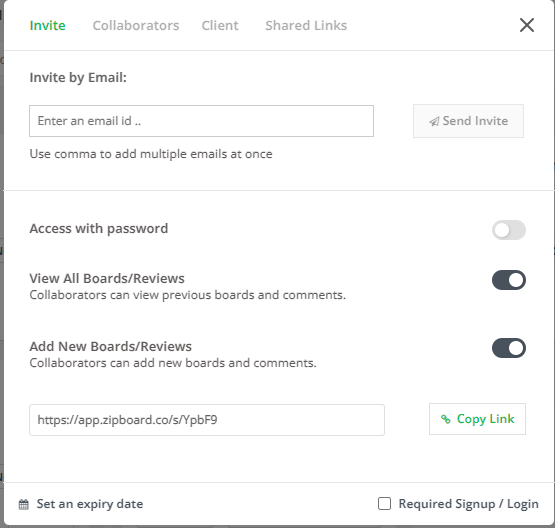
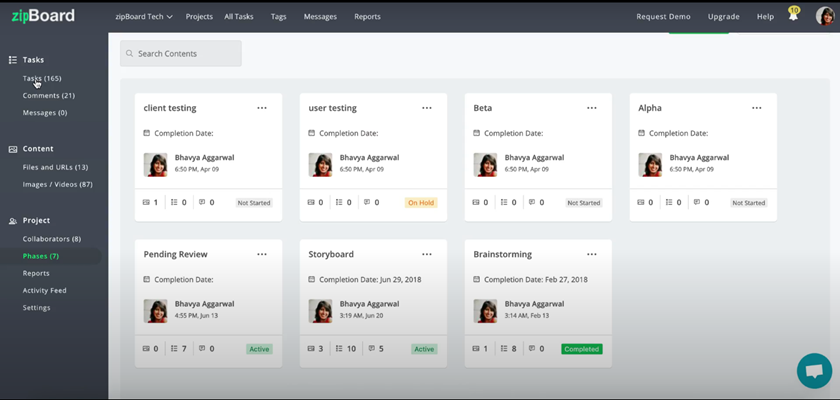
Technical Challenges with Collaboration Tools
Not everyone is tech-savvy, and some SMEs or clients might find it challenging to use collaboration tools for feedback and quality assurance. Therefore, it’s good to use feedback and collaboration platforms like zipBoard – which are easy to use and do not require so much effort from the end of the clients and SMEs during collaboration.
Best Practices for Effective Collaboration with SMEs
Build a Collaborative Framework
A collaborative framework sets the foundation for effective eLearning development collaboration. It involves establishing clear expectations, providing examples to guide SMEs and clients, and fostering mutual respect.
For instance, at the start of the project, you could provide SMEs and clients with a clear outline of the project timeline, their roles and responsibilities, and the expected deliverables. Providing examples of previous successful collaborations can also help guide their contributions.
Implement Effective Communication Strategies
Before any meeting or discussion with the SMEs and clients, do your background research, prepare questions, and set a clear agenda.
Additionally, during meetings, record interviews and any discussions to ensure that no valuable information is lost so you can refer back to them later.
Again, asking insightful questions can help extract valuable insights from SMEs and clients.
Lastly, learn to appreciate their time and contributions to help build a positive relationship.
Use Project Management Tools for SME/Client-L&D Collaborations
Project management involves creating a clear and realistic timeline and scope, and using tools for communication, feedback, and progress tracking. So using a project management tool can help keep track of tasks, deadlines, and progress.
You can share regular updates with SMEs and clients to keep them informed of the project status. And you can manage feedback and revisions effectively through the tool, ensuring that everyone is on the same page.
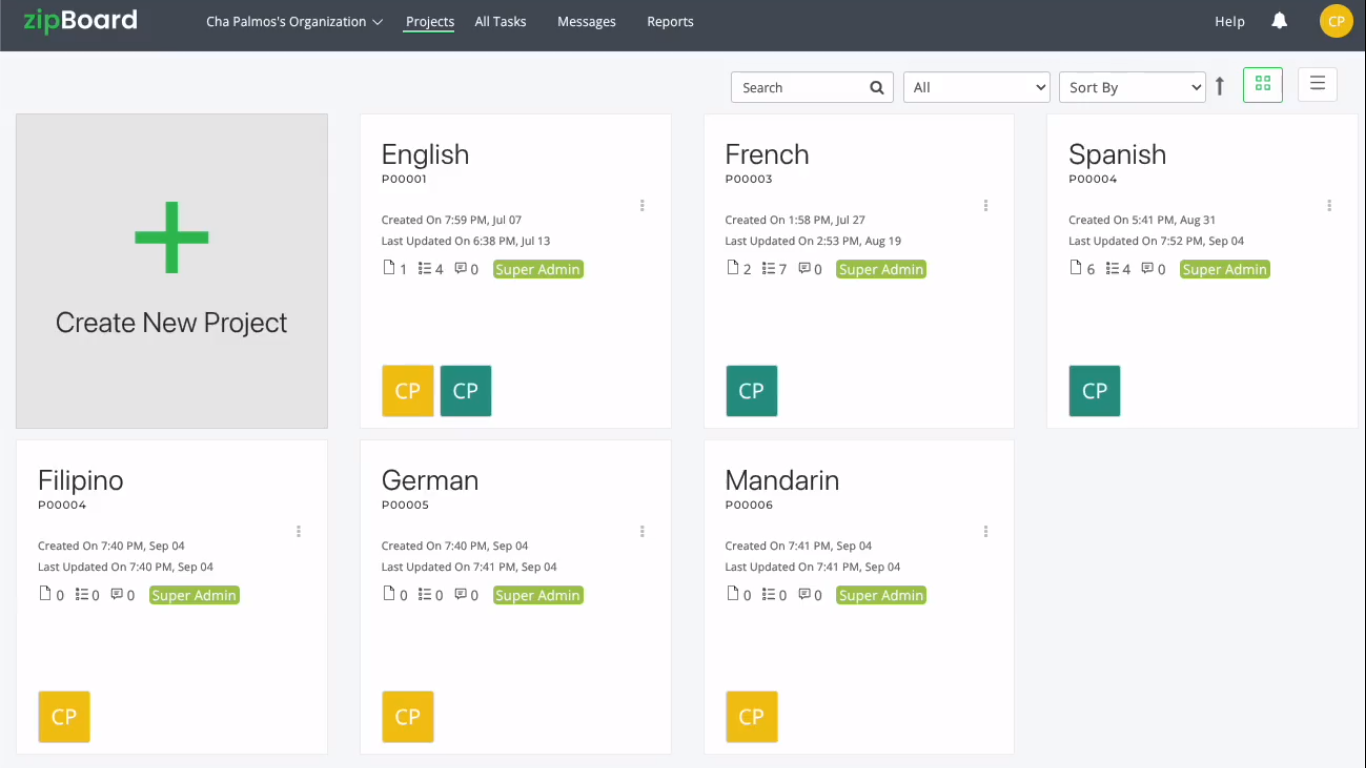
Use Design Feedback and QA Tools
Using design feedback and quality assurance (QA) tools can streamline the review process and ensure the quality of the content. Tools like zipBoard allow you to easily collect, track, and manage feedback from clients and SMEs in one place. This streamlines the collaboration process and ensures feedback is organized and issues are resolved promptly.
A Guide on How L&D Teams Can Work Effectively with SMEs and Clients
To streamline the process and make it easier to grasp, we’ve divided it into 7 sections: Preparation, Collaboration, Content Development, Quality Assurance, Finalization, Feedback and Continuous Improvement, and Recognition and Appreciation.
Each section provides steps and strategies to guide your L&D team’s collaboration process with SMEs and clients.
[Free Checklist]
Collaborating with SMEs and Clients during eLearning Course Development
Get the Checklist Preparation
1. Identify Stakeholders
This involves determining who will be involved in the project, including the L&D team, SMEs, and any other relevant stakeholders. At this stage, clearly define the roles and responsibilities of the collaborators to avoid confusion and ensure accountability.
2. Define Project Scope and Objectives
Clearly outline what the project aims to achieve, including the learning outcomes for the end-users. Additionally, identify, define, and document the scope of the project, including its boundaries and deliverables.
For instance, if the project is to create an eLearning course on cybersecurity, the scope could include the specific topics to be covered, the course duration, and the desired learning outcomes.
This will increase productivity, enhance project planning, and help prevent scope creep.
3. Draw a Communication Plan
Establish how your team will communicate with SMEs and clients throughout the project.
When developing a communication plan, some must-haves to include are identifying preferred communication channels, setting a schedule for meetings, and deciding how updates will be shared.
For example, you might decide to use email for formal communication, instant messaging for quick queries, cloud-based collaboration platforms for design feedback and QA, and weekly Zoom or Microsoft Teams meetings for discussions and updates.
Collaboration
1. Host a Kick-off Meeting
Host a meeting at the start of the project to introduce team members, discuss the project objectives, and clarify expectations.
This sets the stage for successful collaboration. It also helps build rapport among team members and ensures everyone is aligned towards the same goal.
2. Plan Content
Work together to outline the structure of the content, including the topics the course will cover and their sequence. This ensures that the content is organized and flows logically.
For example, a course on project management might start with an introduction to the topic, followed by modules on project planning, execution, monitoring, and closure.
3. Create the Content
Determine who will be responsible for creating each part of the content. It’s important to balance the SME’s insights with the L&D team’s expertise in instructional design. For instance, the SME could provide the technical content, while the L&D team turns it into an engaging and interactive learning experience.
4. Regular Check-ins
Meet regularly to discuss any challenges encountered, brainstorm solutions, and make necessary adjustments to the project plan
These regular check-ins provide an opportunity to review progress, address questions, and ensure that the project is moving in the right direction.
Content Development
1. Invite SMEs to Contribute their Expertise
Facilitate SME input by providing templates or guidelines for content creation. Also, encourage SMEs to provide real-world examples and case studies to make the content more relevant and engaging.
For example, an SME in a sales training course could share anecdotes from their own experience to illustrate key sales techniques.
2. Set Up Review Cycles
Establish a process for reviewing the content and providing feedback. (See below an example of a review cycle in zipBoard).
This should involve both the L&D team and the SMEs to ensure that the content is accurate and meets the learning objectives.
Regular reviews can help catch any errors or gaps in the content early, saving time and effort in revisions.
[Blog]
How to Set Up an Effective Learning Design Feedback and QA Process
Read the blog 3. Align Content with Learning Objectives
Regularly conduct audits to ensure the content aligns with the intended learning outcomes. While you may not be conducting an in-depth QA at this point, your aim here is to map the content to learning objectives to ensure you’re on the right path.
This helps ensure that the content effectively meets the learners’ needs.
For example, if one of the learning outcomes is for learners to be able to use a particular software, the content should include step-by-step instructions and practice exercises using that software.
4. Determine Media and Format
Collaborate on the choice of media (e.g., videos, infographics, text) and formats (e.g., eLearning modules, presentations) based on the nature of the content and the learners’ preferences.
For instance, complex concepts might be better explained through a video, while factual information could be presented in an infographic.
1. Check for Content Accuracy
Conduct thorough fact-checking to ensure the accuracy of the content. This is important when the content involves technical or specialized information.
Here, SMEs can play a crucial role, leveraging their expertise to verify the accuracy of the content.
2. Review Consistency and Tone
Check that the language, tone, and style are consistent throughout the content. This helps make the content more cohesive and professional.
For example, if the course is aimed at beginners, the language should be simple and jargon-free.
3. Ensure Accessibility and Usability
Ensure that the content is accessible to all learners, including those with disabilities. The content should also be user-friendly, with intuitive navigation and clear instructions.
For instance, videos should have subtitles for those with hearing impairments, and all images should have alt text for those using screen readers.
These are just 3 items to QA in eLearning content development. Get the free eLearning QA checklist below for a complete list:
[Free Checklist]
eLearning QA Checklist
Get Your Free Checklist Finalization
1. Conduct Final Review
Conduct a final review of the content to ensure that all changes have been incorporated and that the content meets the project objectives. This is the last chance to catch any errors or make any final tweaks to the content.
2. Have an Approval Process
Define a process for obtaining final approval of the content from both the L&D team and the SMEs. This ensures that everyone is satisfied with the final product. The approval process might involve a final meeting where the content is presented and any final concerns are addressed.
Feedback and Continuous Improvement
1. Conduct a Post-Implementation Review
After the content has been deployed, gather feedback from learners and SMEs to identify areas for improvement. This can inform future content development efforts.
For example, if learners find a particular section of the course confusing, it could be revised for clarity in future iterations of the course.
2. Implement Feedback Loops
Establish a mechanism for ongoing feedback and collaboration. This allows the content to be refined and updated in response to changing needs or feedback from learners.
For instance, a feedback form could be included at the end of the course for learners to share their thoughts and suggestions.
Additionally, you could set up regular check-in meetings even after the course has been deployed, to discuss any feedback received and make necessary updates. This ensures that the course remains relevant and effective over time.
[Free Checklist]
Collaborating with SMEs and Clients during eLearning Course Development
Get the Checklist Recognition and Appreciation
1. Acknowledge SMEs and Clients
Recognize the valuable contributions of SMEs and clients to the learning content creation process. You can do this through formal acknowledgments in the content, thank-you notes, or other forms of recognition.
For example, you could include a special acknowledgment section in the course materials, or send a personalized thank-you note or token of appreciation to the SMEs and clients after the project completion.
2. Continuously Engage SMEs and Clients
Maintain a positive relationship with SMEs and clients for future collaborations. Show appreciation for their expertise and the time they have dedicated to the project. This could involve keeping them updated on the impact of the course, involving them in future projects, or even just checking in from time to time to maintain the relationship.
[Case Study]
How ELM Learning Builds High-Quality Content for Enterprises with zipBoard
Read the case study to see how adopting a unified client feedback and QA process streamlined ELM Learning’s content development process.
Take ne to the case studyTools to Help L&D Teams Collaborate Effectively with SMEs and Clients
- Project Management Tools: Trello, Asana, Wrike, Monday.com, JIRA
- Communication Tools: Slack, Microsoft Teams, Zoom
- Document Sharing and Collaboration Platforms: Google Workspace (Docs, Sheets, and Slides), Microsoft SharePoint, Dropbox
- Learning Management Systems (LMS): Moodle, Canvas, Blackboard
- Content Creation and Collaboration Tools: Articulate 360, Adobe Captivate, Vyond
- Feedback and Survey Tools: SurveyMonkey, Google Forms, Typeform
- Time Tracking and Scheduling Tools: Toggl, Calendly, Doodle
- Interactive Whiteboard and Brainstorming Tools: Miro, Jamboard, Lucidchart
- File Version Control Systems: GitHub, GitLab, Bitbucket
- Customer Relationship Management (CRM) Tools: Customer Relationship Management (CRM) Tools: Salesforce, HubSpot, Zoho CRM connector
- Collaborative Review Tools: InVision, Adobe XD, Figma, Mural, Loom, Ziflow, ProofHub, zipBoard
- Testing Tools: TestRail, Selenium, UserTesting, Lambda Test
Implementing zipBoard into our development process has taken the team from using antiquated manual processes to an easy to use, globally accessible, online process. zipBoard’s environment allows multiple projects to be set up and managed uniquely; where other tools force a specific method for everything, zipBoard gives you and your team some elbow room. The client and the internal team can both access the data while still preserving the integrity and security of internal information.
Beth Epperson, QA Manager & Accessibility SME, ELM Learning
Next Steps
Streamline Your Collaboration and eLearning QA Process with zipBoard
Among the tools listed above, zipBoard is designed to streamline the feedback process and enhance collaboration with clients and SMEs. It seamlessly integrates with most of the tools listed, thereby giving you a central hub for collaboration and digital asset review management.
Integrating zipBoard into your existing course development workflow ensures:
- Real-Time Collaboration: zipBoard fosters a collaborative environment where team members can work together in real-time, eliminating delays and ensuring prompt feedback, thereby enhancing productivity and decision-making.
- Centralized Digital Assets Review and Management: As a centralized hub, zipBoard efficiently manages all digital assets, providing a single source of truth for easier review, approval, and update of content. This centralized approach enhances visibility, accessibility, and control over your eLearning content.
- Customizable Workflows for Increased Productivity: zipBoard allows eLearning teams to create custom workflows that fit their existing processes for eLearning content development and QA. This feature increases productivity and clarity, improves project management, and ensures better collaboration.
- Access to Collaborative Review Tools for All File Types: zipBoard provides robust annotation tools compatible with all file types (including live URLs, PDF documents, zip files, videos, images, audio, etc), allowing users to provide feedback directly on the asset, streamlining the review process and ensuring that feedback is contextual and actionable.
- Efficient Task and Issue Tracking: zipBoard simplifies the tracking of tasks and issues, integrating task and issue tracking seamlessly into the review process. It ensures that feedback is addressed by the appropriate stakeholders, eliminating the risk of overlooking crucial details during the development lifecycle.
- Version Control and Management of Digital Assets: The phases feature in zipBoard enables efficient version control, allowing teams to manage and track changes to digital assets effortlessly, ensuring that everyone is working with the most up-to-date versions.
In essence, zipBoard not only streamlines the review process but also makes feedback management more efficient and effective. It provides a single platform where L&D teams, SMEs, and clients can collaborate effectively to create high-quality learning content.
So what do you say?
Save 5000+ hours annually on reviews and deliver courses 50% faster with zipBoard
Start your free trial or book a demo today so that we can create a tailored solution for you.
Book DemoStart Free TrialAuthor’s bio:
Dorcas Kpabitey is a Content Marketing Specialist at zipBoard. She began her content marketing journey alongside her BA in Political Science and Spanish at the University of Ghana. If she is not tapping away at her keyboard or spending time on Twitter and LinkedIn, she spends her day reading articles, newsletters and books.
Related Post
Recent Posts
- Why Your Team Needs a Content Feedback System (Not Just Comments in Docs) May 28, 2025
- Content Approvals Are Slowing You Down — Here’s the Fix May 26, 2025
- How to Streamline Content Review and Approval — Best Practices, Tools & Automation May 12, 2025
- What Is Content Operations? And Why It Breaks Without a Feedback & Approval System May 3, 2025
- Why Designers Need a Website Visual Feedback Tool: Improve Design Reviews & Client Collaboration April 25, 2025
©️ Copyright 2023 zipBoard Tech. All rights reserved.
